Altamira Cave
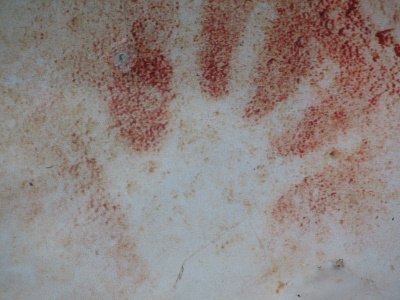
The Cave of Altamira and Paleolithic Cave Art of Northern Spain represent some of the earliest human art.
The 18 caves feature well-conserved drawings and polychrome rock paintings of wild mammals and human hands. They were made by the hunter-gatherers of the Upper Palaeolithic (35,000 – 11,000 BP). The rock art enables us to better understand aspects of the way of life and the beliefs of these early humans.
Community Perspective: Until 1977 the original Altamira Cave was still open (as Susan, Mark, Gavin and Lucy testify), nowadays only 5 people per week can get in (via an old waiting list, no lottery anymore). There is a replica that can be visited, plus other original caves within the set of 18 such as Tito Bustillo (Ian) and El Castillo (Els, Clyde).
Asturian Monuments
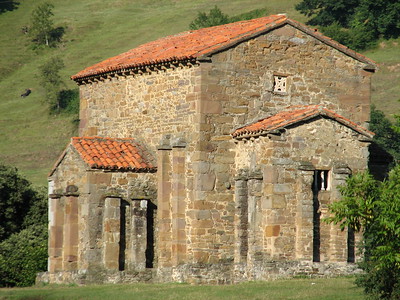
The Monuments of Oviedo and the Kingdom of the Asturias represent a distinct form of medieval Christian architecture developed in isolation.
The six constructions all date from the 9th century when Asturias was a stronghold of Christianity while the Iberian Peninsula was mostly under the Emirate of Cordoba. An innovative pre-Romanesque architectural style developed in this isolated region north of the Cantabrian mountains. The rich decors were inspired by the styles of the Arab world and Asia Minor.
Community Perspective: The six are still in a remote setting, but the main ones can be reached on public transport (and a bit of walking) from Oviedo as testified by Nan. The three later added components in the city of Oviedo are easily covered but less rewarding.
Avila
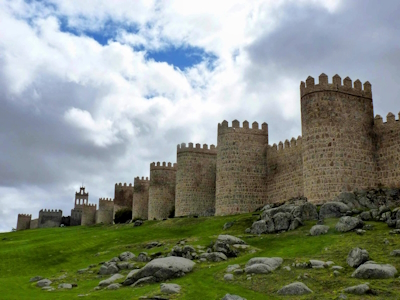
The Old Town of Avila with its Extra-Muros Churches is a fortified city that has the best preserved medieval walls in Spain.
The walls originally date from 1090, and today are 2.5km long with 88 towers and 6 gates. The town is further renowned for its Gothic cathedral and its Romanesque churches and convents, which lie both in and outside the walls.
Community Perspective: You can walk on the walls, but they look a lot better from the ground. Don’t go on a Monday as everything will be closed, even the access to the walls. San Vincente is recommended as the most interesting of the extra-muros components to visit.
Bagerhat
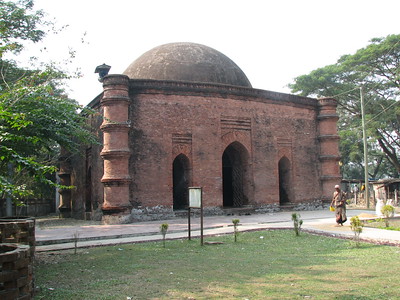
The Historic Mosque City of Bagerhat comprises the remains of a 15th-century city renowned for its early Muslim architecture.
Bagerhat, the historical Khalifatabad, was founded by Khan Jahan, an Islamic preacher probably of Turkic origin. He adorned the city with mosques, roads, bridges, palaces and reservoirs constructed from baked brick. He established all of this within a short time span while introducing a distinct architectural style. The unique Shait-Gumbad mosque is a central feature.
Community Perspective: the site essentially consists of two locations a few km apart - the impressive main mosque and the mausoleum which attracts plenty of local worshippers. Those who have visited the Bangladeshi Hindu temples (from a later period) will notice the “similarity of building materials and, to some extent, style and decoration”.
Buddhist Vihara at Paharpur
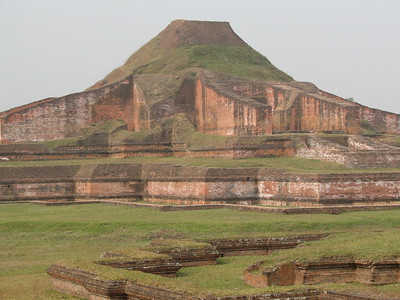
The Ruins of the Buddhist Vihara at Paharpur comprise a Buddhist Monastery dating from the late 8th century.
The monastery was a renowned center of Buddhist religion until the 17th century. It was built from terracotta as a massive single structure. Its architectural style influenced temples in Myanmar, Java and Cambodia. The building is covered in carved decorations, both in stone and terracotta, with bands of terracotta plaques in rows all around the terraces.
Community Perspective: located deep into the Bangladeshi countryside, so "getting there is a pleasure in itself as you pass the myriad of Bengali rural activities". It’s a very large complex and it doesn't see many visitors. Local reviewers worry about the lack of protection and more interpretative signs would be useful.
Chavin
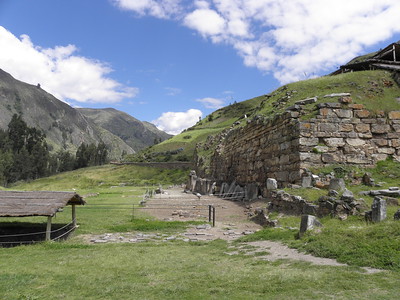
The archeological site of Chavin de Huantar was a sanctuary and pilgrimage site of the early pre-Columbian society of Chavin.
The cult complex is located in a high valley in the Andes. It consists of temples, a number of terraces and squares and a network of underground galleries. The Castillo is the main temple; it was decorated with sculptured cornerstones - the famous "Cabezas clavas" of which one is still in situ. Furthermore, there are zoomorphic bas-relief sculptures and sculpted megaliths.
Community Perspective: “Fresh mountain air, few tourists and, of course, a great site with a nice museum”. The underground galleries and chambers are the most fascinating aspects. Chavin can be reached from Huaraz on a public bus, with private transport, or on a tour.
Congonhas
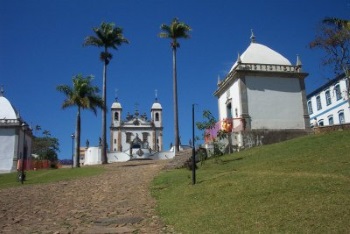
The Sanctuary of Bom Jesus do Congonhas is an ensemble of Catholic religious art, executed in rococo and baroque styles.
The group consists of Bom Jesus Church, the parvis with 12 statues of the prophets, and 6 chapels containing the 7 stations of the cross. The graceful sculptural work was done by the artist Aleijadinho. The sanctuary was commissioned by Feliciano Mendes who, after having been miraculously cured of an illness, used his own money and a succesful fundraising campaign for its construction.
Community Perspective: the statues of The Prophets really set this site apart. Carlo seems to be the only reviewer so far having seen the church interior in its full glory. Congonhas is best visited as a side trip from Belo Horizonte or Ouro Preto.
Divrigi

The Great Mosque and Hospital of Divriği are masterpieces of Islamic architecture.
The ornately decorated mosque and the medical complex are recognized for their exquisite carvings and architecture. The geometrical and floral patterned reliefs found on the main door are of great interest. The Seljuk architect probably was inspired by Armenian and Georgian constructions.
Community Perspective: The outside of the (one combined) building is pretty non-descript until you get up close to the doors. Major restoration works on the four ornate portals have been completed now.
Göreme NP

Göreme National Park and the Rock Sites of Cappadocia consist of an eroded landscape dotted with cave dwellings and rock-hewn sanctuaries.
The extraordinary landscape is the combined work of lava-spitting volcanoes, wind and water. The inhabitants of the area hew rooms, chapels, and even whole villages out of the rocks. Religious Byzantine paintings can be found on the walls of churches and monasteries.
Community Perspective: This is a huge, photogenic site and one can spend easily multiple days here. Clyde has written a comprehensive review of what he managed to see over the course of 5-6 days.
Hatra
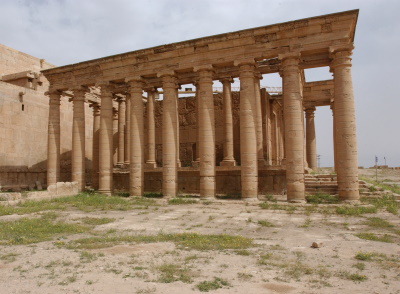
Hatra is a ruined city that can be considered the symbol of Parthian power which for a long time threatened that of Rome.
This religious and trading center was a fortified city of circular design. Its temples were dominated by the Great Temple, an enormous structure with vaults and columns that once rose to 30 metres.
Community Perspective: Hatra suffered severe damage from ISIS and still is mostly off-limits. Thomas managed to enter in 2021 and found hardly any statues left, but the structures were mostly intact.
Hildesheim Cathedral and Church
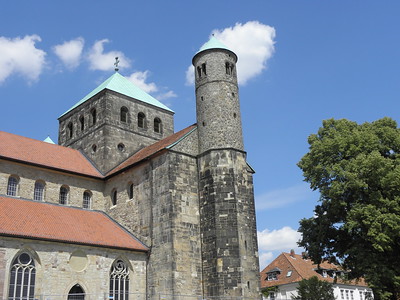
St. Mary's Cathedral and St. Michael's Church at Hildesheim are exceptional testimonies to the religious art of the Holy Roman Empire.
St. Michael’s is considered a masterpiece of medieval architecture which has escaped substantial alterations in later years. Both churches were built in the 11th century in the Romanesque style. They hold artistic treasures such as the Bernward bronzes and the painted ceiling at St Michael's Church.
Community Perspective: Pristine or sterile? “It's almost too good to be true”: what you see today is two churches that were almost completely destroyed and rebuilt in the 1950s plus the result of recent renovations. But the late medieval art treasures are the originals, they were brought to safety during World War II (even the wooden ceiling).
Huascaran National Park
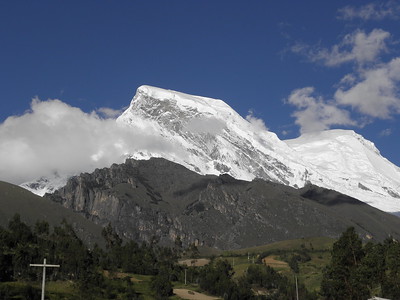
Huascaran National Park is renowned for its number of high snow-capped peaks, its glaciers and its high-altitude plateau.
The Park is located in the Cordillera Blanca range of the Andes and is the highest tropical mountain range in the world. Geologically it is complex, and strong seismic activity is recorded here. The park also has a wide range of vegetation, including the gigantic bromeliad Puya Raimondi. Spectacled bear, puma, vicuna, and condor are among its notable fauna species.
Community Perspective: The area has great hiking opportunities. Less active persons can opt for a guided tour of the glacial lakes Lagunas Llanganuco. Watkinstravel has described a few alternative day tours, while Frederic shares his experience with a number of day hikes.
Istanbul
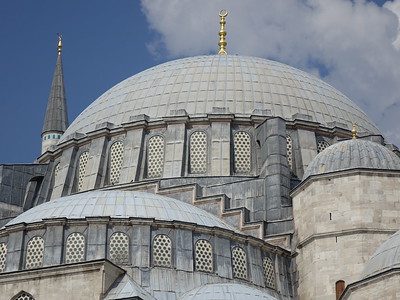
The Historic Areas of Istanbul hold unique monuments from the Byzantine and Ottoman civilizations.
Strategically located on a peninsula, the cityscape reflects the meeting of Europe and Asia over many centuries. The Eastern Roman Empire is represented by the Hagia Sophia and the terrestrial wall of Theodosius II, while the Ottoman Empire contributed the Topkapi Palace and Süleymaniye Mosque among its architectural masterpieces.
Community Perspective: Istanbul is a highly appreciated city and has gathered a significant number of reviews so far. Tony lived there for a year, Kyle and Jay were ‘just’ being tourists taking it all in, Ian ‘did’ the Topkapi Palace and Chola Church, Nan has added a lot of practical info, Els on a revisit covered a number of ‘secondary’ sights, while Ilya added the perspective of visiting on a layover.
Kaziranga National Park

Kaziranga National Park comprises wet alluvial grasslands that are home to the world's primary protection area of the Indian rhino.
The park’s ecosystem consists of tall elephant grass, marshland, shallow pools and dense tropical moist broadleaf forests, crisscrossed by four major rivers including the Brahmaputra. Two-thirds of the world's remaining Indian rhinos live in the park, and Kaziranga also has a high density of tigers and large breeding populations of elephants, water buffalo and swamp deer. It is an important area for migratory birds at the junction of the Australasia and Indo-Asian flyways.
Community Perspective: The park is well-developed for tourism and provides the best viewing of rhinos in Asia. The best time to visit is from December to April when temperatures are low. Solivagant was "lucky" to see both a tiger and the results of poaching.
Keoladeo National Park
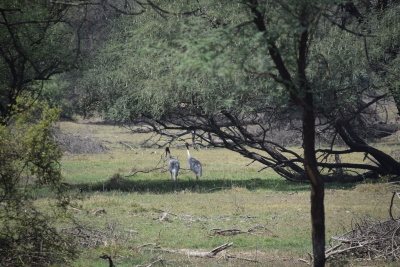
Keoladeo National Park comprises a wetland that is important for migratory waterfowl.
Located in the middle of the Central Asian migratory flyway, it is an important wintering place for birds from colder regions in the North, such as Siberia and China. 375 bird species have been recorded here; among them the rare Siberian crane, which is now considered extinct in the property. The wet areas in the park rely on water supply from a reservoir.
Community Perspective: birders love(d) it, but the more skeptical Nan notes that “the wetland that forms the national park is an artificial creation by the English to attract birds for... hunting”. Keoloadeo is accessible by bus from Agra. The park is best visited during the monsoon when the birds start nesting.
Kerkuane

The Punic Town of Kerkuane and its Necropolis show the urban planning and architecture of the Phoenician-Punic Empire.
The city was never rebuilt after its destruction in 255 BCE and therefore (unlike Carthage) has no mixing with later Roman construction. The harbor, the street plan, residential areas, squares, temples and the remains of the large cemetery have been uncovered. The houses were built to a standard plan in accordance with a sophisticated notion of town planning.
Community Perspective: located in a very nice coastal setting, only the foundations of the town are left and it needs about an hour to explore. Els has provided directions to the less-obvious second location.
Manas Wildlife Sanctuary
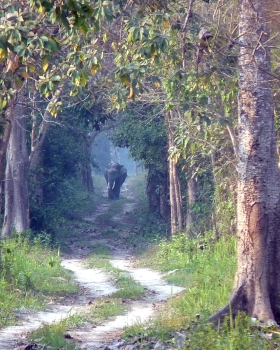
The Manas Wildlife Sanctuary in the Himalayan foothills is known for its tiger, elephant and rhino populations.
The sanctuary lies in a scenic landscape of rivers, forested hills and grasslands. The Manas River is a major tributary of the Brahmaputra and it constantly shapes the land. The site provides critical and viable habitats for rare and endangered species, including tiger, greater one-horned rhino, swamp deer, and pygmy hog. Some 500 species of birds have been recorded.
Community Perspective: Solivagant has described this site’s recent ill-fated history, while “back in the early 80’s, Manas was something of a jewel in India’s wildlife crown – a large viable unspoilt Terai forest ecosystem”. Nowadays you won’t see large numbers of animals, as Zoë says “It's almost like all the animals ran away up north”, and Kaziranga is “better”.
Medina of Marrakesh
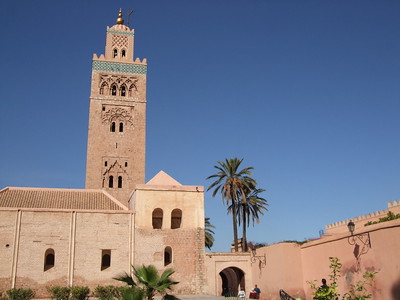
The Medina of Marrakesh is an old Islamic capital originating from the 11th century, enclosed by 16km of ramparts and gates.
The city owes its original splendour to the Almoravid and Almohad dynasties (11th - 13th centuries), who made Marrakesh their capital. The Medina has several architectural and artistic masterpieces from different periods in history.
Community Perspective: It has massive charm, especially at the Djema-El-Fna. There are numerous sights of architectural interest as well, such as the Koutoubia Mosque, Medersa Ben Youssef and the Bahia Palace. One can easily spend 3 days in this city, also taking in the more outlying gardens.
Painted Churches in the Troödos Region
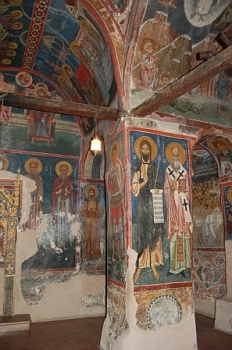
The Painted Churches in the Troödos Region comprise ten rural Byzantine churches and monasteries that are renowned for their paintings.
Their rich interiors present an overview of Byzantine and post-Byzantine painting. The architecture of the churches is indigenous: on the inside there's the classical form of a Byzantine church, on the outside it often looks like a stable or a farm. The extra layer on the outside was constructed to be able to cope with the heavy snowfall that can occur in the Troödos Mountains.
Community Perspective: “You won't be able to visit them all if you're in a hurry and you won't enjoy your visit if you're in a rush.” Two days and a rental car are necessary at least. The review by Kbecq provides access information for all 10 churches while departing from Nicosia, and Riccardo's does so when basing yourself in Kakopetria. Tsunami’s story reminds us of what travel could be like during Covid.
Petra
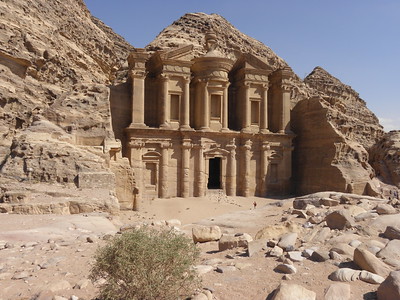
Petra is the archaeological site of an ancient Nabatean caravan city renowned for its elaborate tomb and temple architecture.
The city developed as an important caravan centre between the Dead Sea and the Red Sea between the first centuries BCE and CE. The Nabateans blended ancient Eastern traditions with Hellenistic architecture, while partly cutting their buildings into the red sandstone rock. Petra also held an extensive water engineering system.
Community Perspective: This is one of the highest-ranked WHS and the 20 reviewers so far have left hardly anything but praise, although a few were annoyed by the ubiquitous touts and donkeys. Solivagant has visited in 1964, 1999 and 2012 and lists the changes he has seen. Squiffy has described the must-sees. General tips given: allow at least two days, don’t go with a group on a short visit and don’t go in the heat of summer.
Pont du Gard
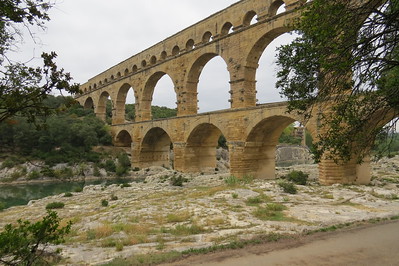
Pont du Gard (Roman Aqueduct) is one of the oldest and most remarkable Roman hydraulic works.
It’s an aqueduct bridge, the major remaining element of a 50km long aqueduct that supplied the Roman colony of Nemausus (Nimes) with water. It spans the river Gardon. The bridge is 48.77m high, has three levels and was built in the 1st century AD.
Community Perspective: It's an impressive structure. Nowadays you have to pay at the ticket booths to even see it from the river banks or the stone footbridge next to it. It is recommended to join a guided tour of the aqueduct channel on the top level of the bridge, which is offered in summer.
Québec

The Historic District of Old Québec is the most complete fortified colonial town left in North America.
Québec (founded in 1608) is one of the oldest colonial settlements in Canada. It served as the capital of New France and that of the British colony in 1763. The Historic District covers the Upper Town (with its administrative and religious buildings) and Lower Town (the district of commerce and the navy).
Community Perspective: “Europe in North America” and almost totally French-speaking. Overall a charming place to visit, with good views. Els has listed most of the individual sights within the old city.
Quseir Amra
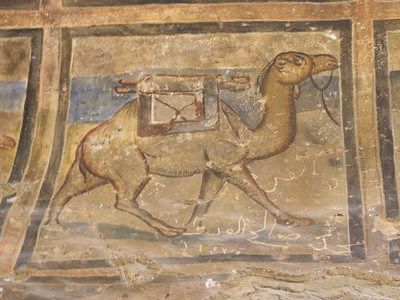
Quseir Amra is an early 8th-century Umayyad building known for its well-preserved wall paintings.
This Desert Castle with a triple-vaulted ceiling was used as a princely retreat. It comprises a reception hall and a hammam, both decorated with extensive figurative frescoes. The castle represents early Islamic art and architecture, still showing links with classical and Byzantine precedents.
Community Perspective: This is one of the castles on the so-called Desert Castle Loop, and it is worth taking in some of the others as well (Qasr al-Kharanah is recommended) to make the detour worth it.
Rock Art of Alta
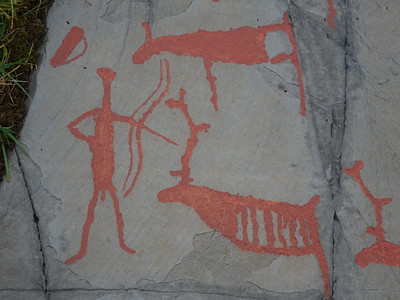
The Rock Art of Alta consists of more than 6,000 rock carvings and paintings that show aspects of life, the environment and the activities of hunter-gatherer societies in the Arctic in prehistoric times.
The rock art is found on five separate sites along Altafjord. The earliest carvings in the area date from around 5,000 BCE. The wide variety of imagery shows a culture of hunter-gatherers that was able to control herds of reindeer, was adept at boat building and fishing and practiced shamanistic rituals involving bear worship and other venerated animals.
Community Perspective: located at an atmospheric location way inside the Arctic Circle, with a well-equipped visitor center at Hjemmeluft (the only location officially open to visitors) 4km outside of Alta town.
Royal Palaces of Abomey

The Royal Palaces of Abomey testify to the power of those who ruled the Kingdom of Dahomey, one of the most powerful in West Africa.
The site consists of a number of former palaces (one for each successive king) within the same enclosure in the center of Abomey and one palace a few km’s away. These palaces were the political centers of their time and also stored the treasures of the kingdom. They were made with traditional earthen materials and decorated with polychrome bas-reliefs.
Community Perspective: inside the complex, you will find the best polychrome bas-reliefs. The tombs and museum are also interesting to visit. Solivagant’s review tells more about the history of the Fon of Dahomey.
Salvador de Bahia

The Historic Centre of Salvador de Bahia represents the most important colonial city in the Brazilian northeast.
Bahia was the first colonial capital of Brazil and the city is one of the oldest in the New World (founded in 1549 by Portuguese settlers). It was the main seaport and also held the first slave market on the continent, with slaves arriving to work on the sugar plantations. It is extremely rich in commercial, defensive, administrative and religious monuments dating from the 17th to the 19th centuries.
Community Perspective: “the most African of Brazil's cities”, “not perfectly conservated, but bold and vibrant”. Highlights include the Convent of St. Francis, the Cathedral and the drumming performances.
Santiago de Compostela
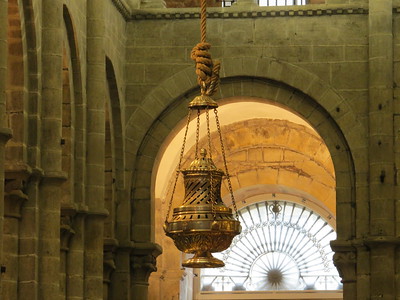
Santiago de Compostela (Old Town) comprises a major Christian pilgrimage site.
The site dates from the 9th century when the tomb of Apostle Saint James ‘the Greater’ was discovered here. His remains are revered here since and the city was named after him. Thousands of pilgrims from all across Europe walked to this sanctuary. Furthermore, the town’s Romanesque and Baroque monuments have influenced art and architecture in the Iberian peninsula.
Community Perspective: The city seems best appreciated after walking there. The Cathedral is mainly impressive for its size and active pilgrim life.
Segovia
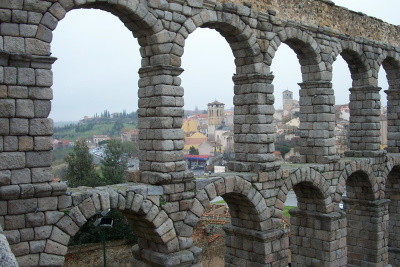
The Old Town of Segovia and its Aqueduct comprises a historic town with an excellently preserved civil engineering work from the Roman period.
The city’s urban layout and architecture are based on a number of diverse, cultural traditions and where Moors, Christians, and Jews coexisted for a long period of time. The Roman aqueduct supplied water to the high-lying part of the town, at that time occupied by the Roman military headquarters. Today it’s the site of the Alcázar, built by the Almoravid dynasty and later in use as a Royal Residence.
Community Perspective: The city revolves around the impressive Aqueduct, but it has many more sites of interest such as the Alcazar (for its interior decorations) and the Gothic Cathedral. Some interesting historic buildings such as the Royal Mint lie just outside the curiously shaped core zone but are worth checking out, as described by Caspar and Hubert.
Tadrart Acacus
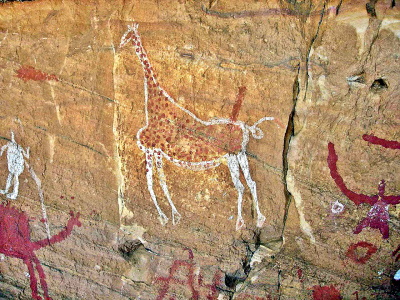
The Rock-Art Sites of Tadrart Acacus hold thousands of cave paintings that reflect the way of life of different Saharan civilizations.
The mountain massif of Tadrart Acacus is located in the desert area of western Libya. The paintings and engravings were done on its rock walls and in rock shelters. They date from 12,000 BCE to 100 CE and reflect cultural and natural changes in the area. They depict animals such as giraffes, elephants, ostriches and camels, but also men and horses.
Community Perspective: it borders the very similar Algerian WHS Tassili n'Ajjer, and according to Zoë you can hop across to set foot in both parts.
Thracian tomb of Sveshtari
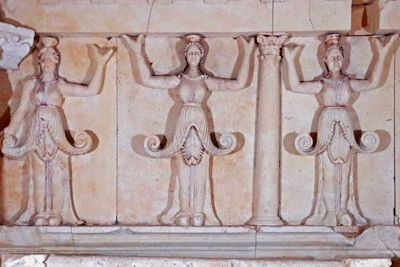
The Thracian Tomb of Sveshtari comprises a hypogeum from the 3rd century BCE.
The tomb's architectural decor is considered to be unique, with polychrome half-human, half-plant caryatids and painted murals. It represents local art from the Getes Thracian peoples, which was inspired by Hellenism.
Community Perspective: There are three tombs to explore here and all are authentic, so it provides a better visitor experience than the Thracian Tomb at Kazanlak. Read Els’s review for what to expect of a visit.